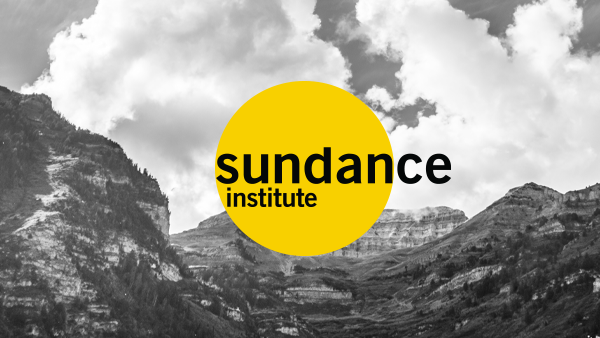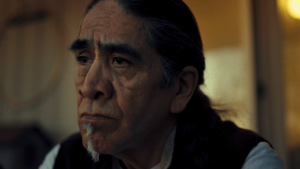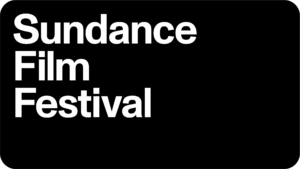Karim El Hakim
Exactly one year ago, a group of activist friends armed with cameras walked out their front door to the epicenter of the Egyptian uprising. With the struggle to survive competing with the struggle to document the events, directors Omar Shargawi and Karim El Hakim capture a fierce moment of history in their film ½ Revolution, part of the Festival’s World Documentary Competition. Karim El Hakim, whose past film credits include Egypt We Are Watching You, understands the power of street protests in action. In his own words below, El Hakim recalls his on-the-ground experience in Cairo.
Responding to the Call to Action
We knew something would happen in Egypt after the fall of Ben Ali in Tunisia and decided to film whatever may happen—for history’s sake at the very least. I kept my camera batteries charged and ready in case something sparked in Egypt. Suddenly on Police Day, January 25, 2011 (a national holiday that commemorates the deaths of 50 Egyptian policemen defending the Ismailia police headquarters from British troops on January 25, 1952) a call was made on the Internet (via Facebook and YouTube) for all Egyptians to take to the streets to protest against police brutality and Mubarak’s 30-year Dictatorship.
I heard about this through activist/artist friends who were joining a march that was headed to Tahrir, but I didn’t think much about it. But when I called back an hour later, the march was over 5,000 strong and growing. Omar and I mobilized and went down to Tahrir, which is just a few blocks from our apartments in downtown. We filmed the massive police presence and small groups of rather polite protesters. It all felt very odd seeing groups of Egyptians chanting slogans against Mubarak – something very rare in public.
Even the police showed surprising restraint at the very beginning, but they finally lost their nerve and started attacking the protesters – first with water cannons and then tear gas. Later that night of the 25th they attacked the first sit-in of Tahrir with shotguns and live rounds. Many died that first night and countless were injured. We ended up getting grabbed and beaten and arrested and later released on the edge of the desert at four in the morning. We were lucky they had no idea we had been filming or even that we had cameras in our pockets! That’s when it all started, but of course we had no idea at that point what would happen and how far it would go.

Photo by Colby D. Crossland/Getty Images
Word-of-Mouth Still Works
Surprisingly, social media played a very little part in my personal experience. The Internet was shut down and mobile phones were also. The effect of shutting down the net and the mobile phones had a surprising effect: because people could not communicate with each other, they simply went out into the street to see what was happening and get word-of-mouth news. This swelled the crowds in the street into a sort of critical mass that didn’t need Twitter or Facebook to know what was happening. In the end, it really wasn’t a matter of technology that made the Egyptian Revolution – it was good old-fashioned people power in the streets.
Bearing Witness to Historic Change
The Egyptian Revolution must be the most extensively photographed and filmed uprising ever in the history of mankind. I would see like, a hundred thousand people in the streets and 30,000 cameras. It was like we all understood the importance of being a witness to these events and to record them for history – so that it could never be denied that it ever happened.
These clips made their ways onto YouTube and other sites and have been flowing ever since. International public opinion continues to be a powerful force in effecting political outcomes and if it wasn’t for the proliferation of cameras and brave individuals wielding them, perhaps events would have turned out differently in Egypt and elsewhere.
A camera is perhaps the only weapon people have against countering the sheer brutality and impunity of a police state. But it also takes an international audience that is willing and able to listen, and able to act on its collective outrage, that is the real driving force for influencing change.

Director Karim El Hakim at the premiere of ½ Revolution. Photo by Sonia Recchia/Getty Images.
Home Court Advantage
This was happening all around my neighborhood. We were in the thick of it and couldn’t escape it. Many important scenes in the film I actually shot from my balcony often when I was at home charging batteries or downloading footage. But the most amazing and compelling reason to keep filming was the human story unfolding in front of me – how my friends and family were reacting to the growing shock of what seemed to be a situation out of control, completely unpredictable, and increasingly dangerous on so many levels. I loved how we huddled together and struggled to stay inseparable and how our emotions would fly from highs to lows in a matter of seconds.
Inside the Critical Mass
When I was in the crowd and was absorbing the emotions around me, it was like the individuals in the crowd all became like networked computers – like one huge collective consciousness where everyone had the same goal. People banded together instantly to help each other, offer vinegar (to counteract the gas), or onions to clean ones eyes with. People stood on their balconies throwing down water and signaling people to surge forward when the police would retreat. Mosques became instant field hospitals as doctors rushed to help the wounded and young guys on vespas and motorcycles became public ambulances.
All of this was a completely spontaneous effort of individuals instantly forming groups with no leadership or organization but the effect was so inspiring and contagious that it led to a collective rejection of fear. Once the fear barrier broke, the people really found their voice and their real power as a human tsunami, which became unstoppable.
The Real Time of ½ Revolution
People watching the film get sucked in and experience moments as the characters do – they feel they are there, along for the ride, just out of frame. This emotional bond allows the audience to not only watch the story as an observer, but also feel the emotions of the characters as a participant. This was something we really stuck to in editing – staying with the true emotions of our characters to tell the story. The result is not a story about the revolution per se, but rather an almost anthropological examination of people under the stress of a revolution – how they behave, what they fear, and the hard choices they constantly make to survive and struggle to stay united.




